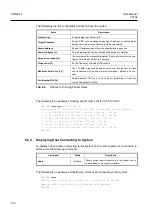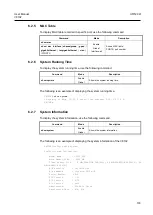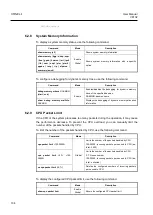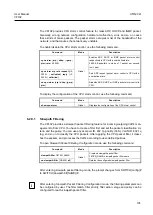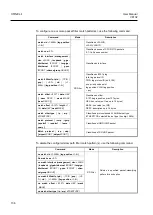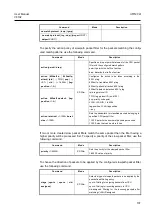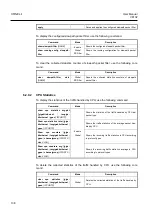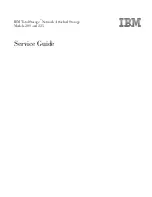
User Manual
UMN:CLI
V8102
145
7 Network Management
7.1
Simple Network Management Protocol (SNMP)
The simple network management protocol (SNMP) is an application-layer protocol de-
signed to facilitate the exchange of management information between network devices.
SNMP consists of three parts: an SNMP manager, a managed device and an SNMP
agent. SNMP provides a message format for sending information between SNMP man-
ager and SNMP agent. The agent and MIB reside on the switch. In configuring SNMP on
the switch, you define the relationship between the manager and the agent. According to
community, you can give right only to read or right to both read and write. The SNMP
agent has MIB variables to reply to requests from SNMP administrator. In addition, SNMP
administrator can obtain data from the agent and save data in the agent. The SNMP
agent gets data from MIB, which saves information on system and network.
SNMP agent sends a trap to administrator for specific cases. Trap is a warning message
to alert network status to SNMP administrator.
The V8102 enhances access management of SNMP agent and limits the range of OID
opened to agents.
7.1.1
SNMP Service
To enable/disable SNMP service, use the following command.
Command
Mode
Description
service snmp
Global
Enables SNMP service.
no service snmp
Disables SNMP service. (default)
7.1.2
Restarting SNMP Deamon
To restart SNMP Deamon service, use the following command.
Command
Mode
Description
restart snmpd
Enable
Restarts SNMP deamon.
7.1.3
SNMP Community
Only an authorized person can access SNMP agent by configuring SNMP community
with a community name and additional information.
To configure SNMP community to allow an authorized person to access, use the following
command.
Command
Mode
Description
snmp community
{
ro
|
rw
}
COMMUNITY
[
A.B.C.D
] [
OID
]
Global
Creates SNMP community.
COMMUNITY: community name
snmp community
{
ro
|
rw
}


